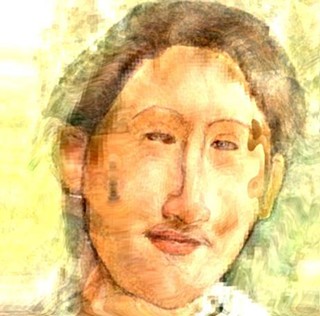This weekend, Tocco is playing John Corigliano's Piano Concerto with the Tucson Symphony and conductor George Hanson. That 1968 American work would be a departure for most of the leading pianists on the concert circuit, but not for Tocco, who is one of the foremost advocates of American piano music past and present.
The Detroit-born Tocco doesn't limit himself to American music. Among his favorite concertos are popular works by Beethoven, Brahms, Mozart and Rachmaninov, plus the Tchaikovsky First, which he played here two seasons ago. Indeed, he began his career with pretty much the same music every other pianist, American and European, was playing.
Upon winning first prize in the 1973 International ARD Competition in Munich, Tocco found himself launched on a promising career with an all too familiar trajectory. "The first couple of seasons I played a lot in Europe, in Germany especially, and I was playing a lot of standard repertory, especially German music," Tocco said last week from his home base of Cincinnati. "But in the 1976 season there was a big celebration of American music tied in with the Bicentennial, and I was asked to play a whole bevy of American music. I had been playing the Barber Sonata and Copland's Variations, but I hadn't really looked into the rest of the American field before. I found out there was a lot of music that really merited being performed."
And perform it he did. He has played and recorded American music reaching back into the 19th century (he's made an especially good series of CDs devoted to music of MacDowell and Griffes), and he has helped bring brand-new works into existence.
To his dismay, much of this music, no matter how old, is new to his audiences.
"A lot of Europeans, especially, didn't know this music," he said. "When I started teaching in Germany in 1990 I requested a textbook that the students were using so I could familiarize myself with all the musical terms in German. This book included an appendix of important composers, grouped by country. There were 30 for Germany, lots for France and Italy, even half a dozen for England. But for the United States, there was only one composer: George Gershwin. The Germans didn't know who Samuel Barber was, they didn't know any of Copland's music, they knew Bernstein only as a conductor and as the composer of West Side Story, and they didn't know any of the younger American composers, or even the older ones like Ives or Cowell. So I started playing a lot more of this music, and I even had a chance to do a couple of commissions.
"One piece I commissioned was John Corigliano's Etude Fantasy, his biggest piece to date for solo piano, and I premiered that (in 1976). It was a very exciting collaboration; he was intense and energetic and young. After that, I looked at his piano concerto and I decided that it really needed to be played. Nobody was doing it. One of my earliest performances of that music, by the way, was with George (Hanson) when he was the assistant conductor with the Atlanta Symphony. Every orchestra I played that piece with wanted to record it. In Atlanta, Detroit and other places, the musicians would come up to me and say, 'Has this piece been recorded?'"
It had, shortly after its premiere, by soloist Hilde Somer and the San Antonio Symphony, but that LP eventually fell out of the catalog. Tocco made the first recording of the concerto to make it onto CD, with the Louisville Orchestra, and the work has been recorded a couple of times more, most notably by Barry Douglas. So Corigliano's sole piano concerto is slowly becoming something of a repertory staple in this country, thanks mainly to Tocco's advocacy in the 1980s and '90s.
Corigliano has been a widely respected composer since the 1970s, and he became one of this country's leading musical figures in the 1990s with such works as his Symphony No. 1 (performed by Hanson and the Tucson Symphony two years ago), his opera The Ghosts of Versailles and his score for the film The Red Violin. The concerto is in a more conservative style than the symphony; if you like Barber's piano concerto, you'll have no trouble with Corigliano's.
Yet the concerto didn't catch on until recently. Tocco attributes that to a lack of advocacy when it was new.
"It was premiered by a pianist who did a lot getting new music commissioned and performed, but she had a limited technical ability," Tocco said of Somer, who appeared with the TSO in the George Trautwein era in the strange Spatial Concerto by Henry Brandt, which included the composer playing the ocarina. "She was able to bring it off in concert, but she didn't have a big technique to make it work in concert, so it kind of died after that. Hilde was interested always in new music, so she would play a piece once, then go on to something else. So John's concerto lay fallow for a number of years; it was one of those pearls waiting to be discovered. Now there are any number of pianists who play it, and play it very well, but I feel very close to the piece because I played it when nobody else did."
Tocco, in fact, has discussed the work extensively with the composer. Some performers feel they're in danger of losing control of their interpretation if they take too much advice from a composer, but not Tocco.
"I don't feel like I have an interpretation that is exempt from the composer's intentions," he said. "I am really an advocate for the composer. It doesn't mean I don't bring my own personality to the piece, but I can't resist the position of the composer."








